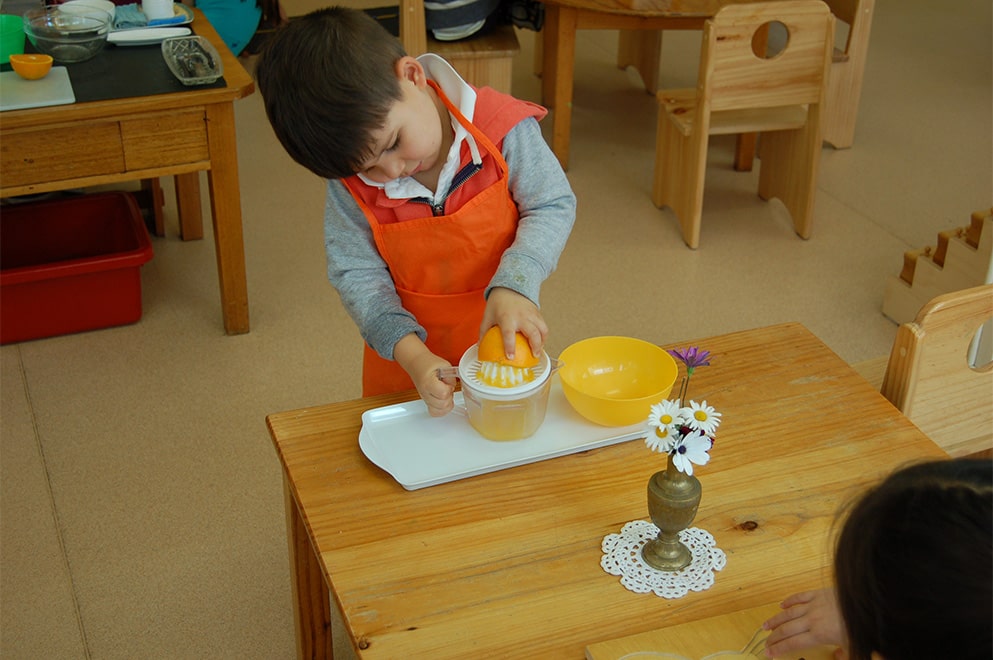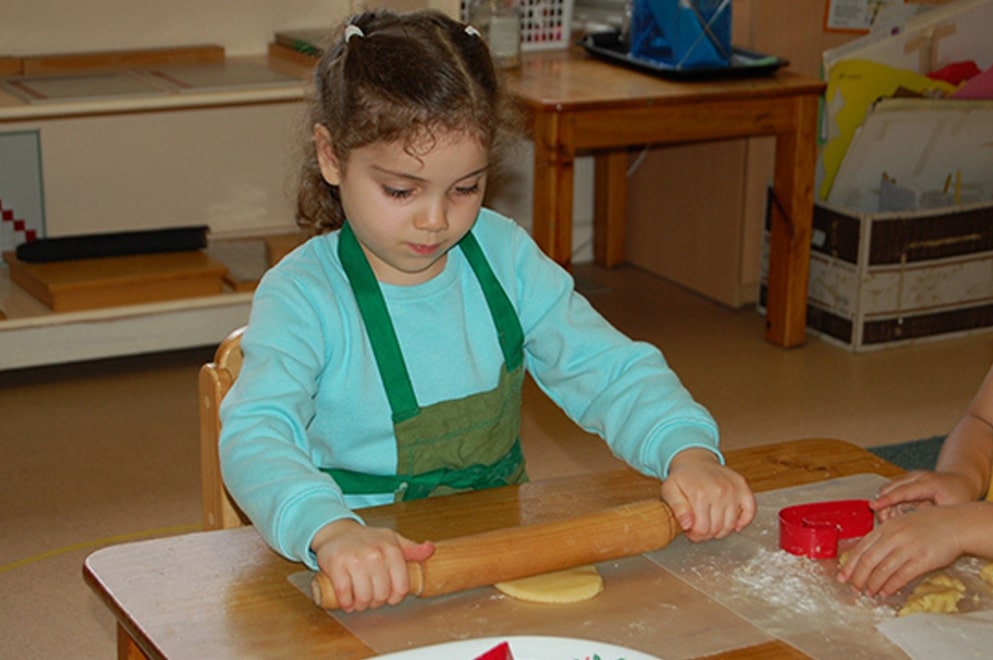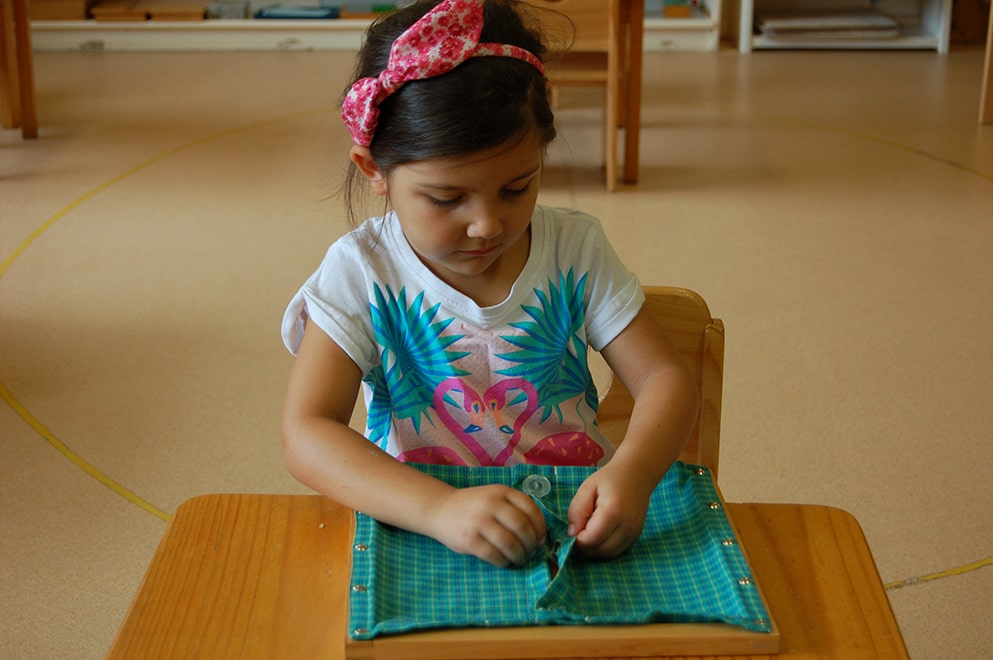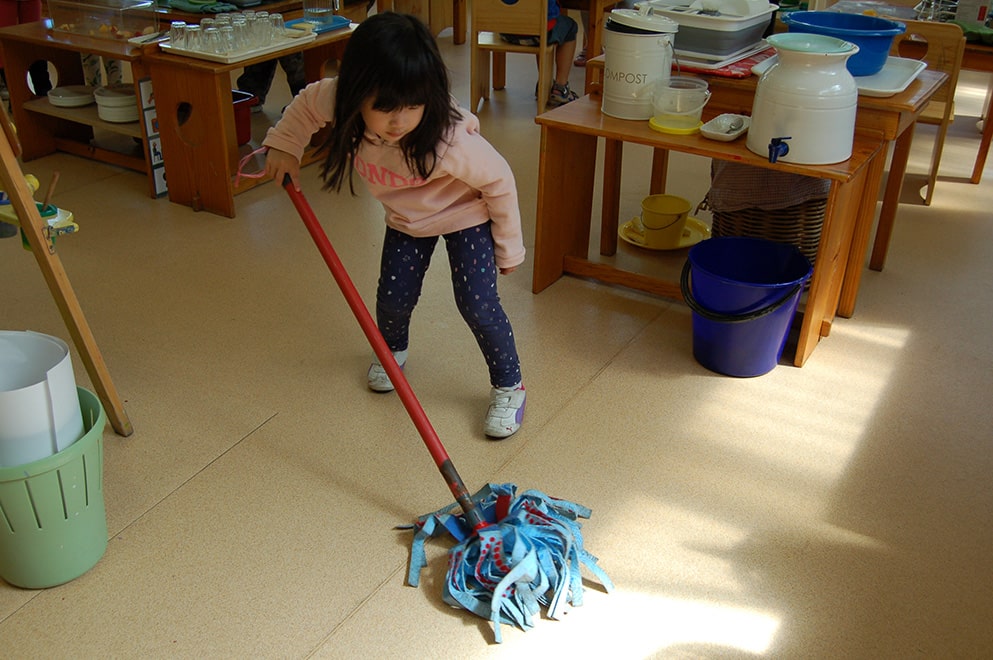‘Practical Life’ Materials
Practical Life activities provide children with real life experiences.
In the Montessori classroom, children are often attracted first to the Practical Life area as they have observed adults perform these activities in their day to day life. Body coordination & control, independence, concentration, self-regulation are some examples of skills developed in this area of learning. Children also develop respect and a sense of responsibility for others and their environment. They experience giving back to the community which helps in establishing a relationship with other members of the group. This leads to a growing sense of self confidence and self-worth.

The activities of Practical Life fall into four categories. Some examples of each are listed below:
- Dressing frames
(button, buckle, press studs, tie bows, zip and lace) - Food preparation
- Hand washing
- Shoe polishing
- Folding cloths
- Sewing buttons
- Spooning and pouring
CARE OF THE ENVIRONMENT
- Washing a table
- Sweeping the floor
- Dusting shelves
- Watering plants
- Polishing brass or silver
- Washing and drying dishes
- Arranging flowers
GRACE AND COURTESY
- Greeting someone
- Offering someone something
- Introducing self and others
- Manners and courteous words
- Asking to join in play
- Passing objects politely
- Offering help to others
- Asking for help
CONTROL OF MOVEMENT
Practising controlled movement is an integral part of activities in the Practical Life area. In addition, the Montessori Method includes specific activities of:
- ‘Walking the Line’ to practice body coordination and control
- The ‘Silence Game’ in which the children use their will power to practice silence for a short time to listen to the sounds around them.




